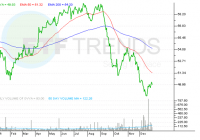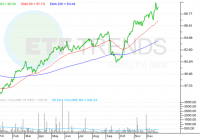Resolve To Focus On Goals Rather Than Results In 2015
Results, results, results. We frequently hear that we should focus on results. More often than not, focusing on results is a waste of time. Because it is looking in the rear-view mirror, rather than the windshield. Someone asked me today what I thought of Janet Yellen as head of the Federal Reserve. I found this hard to answer. Even though Chairperson Yellen has been in the job since February, her job as lead policy-setter has almost no short-term ramifications. It takes quarters – not months – to see the results of those policy decisions. Even after a year in office, it is very difficult to render an opinion on her performance as Fed leader. The fantastic 5% growth in the U.S. economy last quarter has much more to do with what happened before she took office – in fact, years of policy setting before she took office – than what has happened since she became the top Fed governor. We often forget what the word “results” means. It is the outcome of previous decisions. Results tell us something about decisions that happened in the past. Sometimes, far into the past. We all can remember companies where looking backward all looked well, right up until the company fell off a cliff. Circuit City. Brach’s Candy. Sun Microsystems. Further, “results” are impacted dramatically by things outside the control of management, such as: Changes in interest rates (or no changes when they remain low) Changes in oil prices (which have been dramatically lower over the last 6 months) Changes in investor expectations and the overall stock market (which has been on a record-setting bull run) Inflation expectations (which remain at historical lows) Expectations about labor rates (which remain low, despite trends toward higher minimum wages) Technology advances (including rapid mobile growth in apps, beacons, payments, etc.) We too often forget that last quarter’s (or even last year’s) results are due to decisions made months before. Gloating, or apologizing, about those results has little meaning. Results, no matter how recent, are meaningless when looking forward. Decisions made long ago caused those results. “Results” are actually unimportant when investing for the future. What really matters are the decisions being made today, which can cause future results to be wildly different – better or worse. What we need to focus upon are these current decisions and their ability to create future results: What are the goals being set for next year – or better yet, for 2020? What are the trends upon which goals are being set? How are future goals aligned to major trends? What are the future expected scenarios, and how are goals being set to align with those scenarios? Who will be the likely future competitors, and how are goals being set make sure the organization is prepared to compete with the right companies? Far too often, management will say, “We just had great results. We plan to continue executing on our plans, and investors should expect similar future results.” But that makes no sense. The world is a fast-changing place. Past results are absolutely no indicator of future performance. For 2015 and beyond, investors (and employees, suppliers and communities sponsoring companies) should resolve to hold management far more accountable for future goals and the process used to set those goals. That Amazon.com maintains a valuation far higher than its historical indicates it should, primarily because it is excellent at communicating key trends it watches, future scenarios it expects and how the company plans to compete as it creates those future scenarios. In the 1981 Burt Reynolds’ movie ” The Cannonball Run ,” a character begins a trans-country auto race by ripping the rear-view mirror from his car and throwing it out the window. “What’s behind me is not important,” he proudly states. This should be the 2015 resolution of investors and all leaders. Past results are not important. What matters are plans for the future and future goals. Only by focusing on those can we succeed in creating growth and better results in the time to come.

